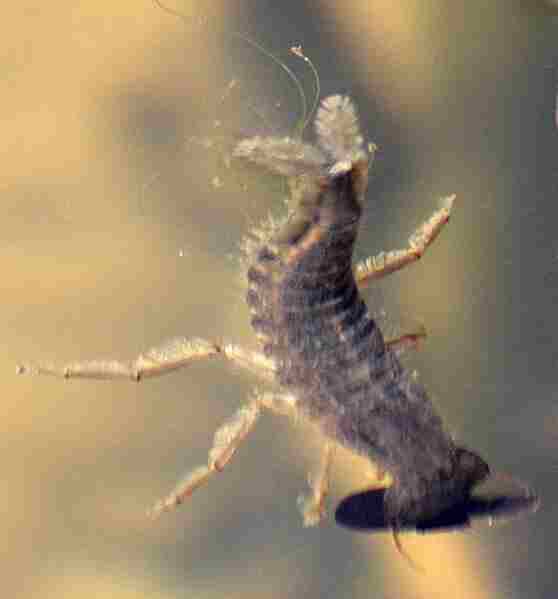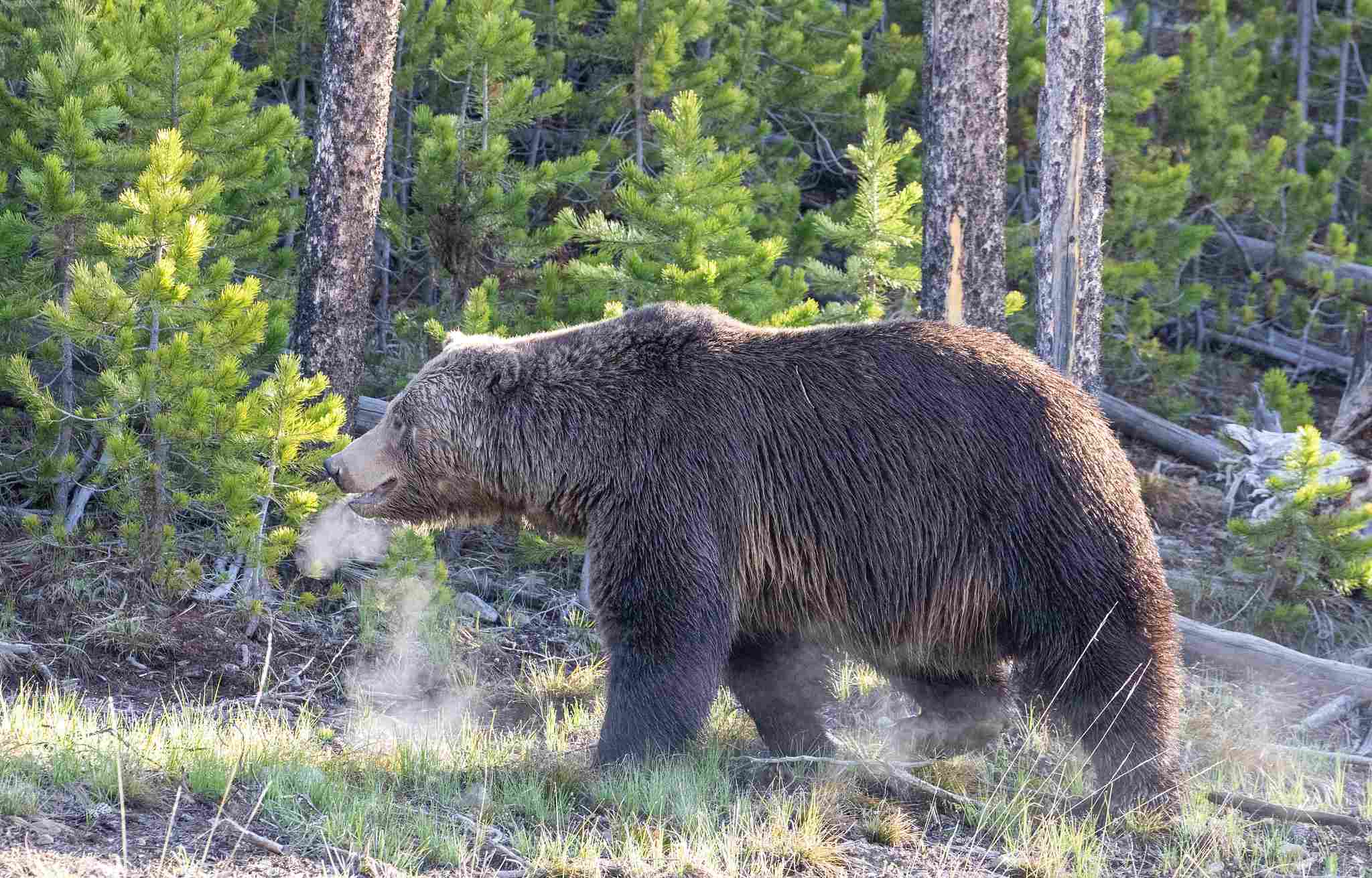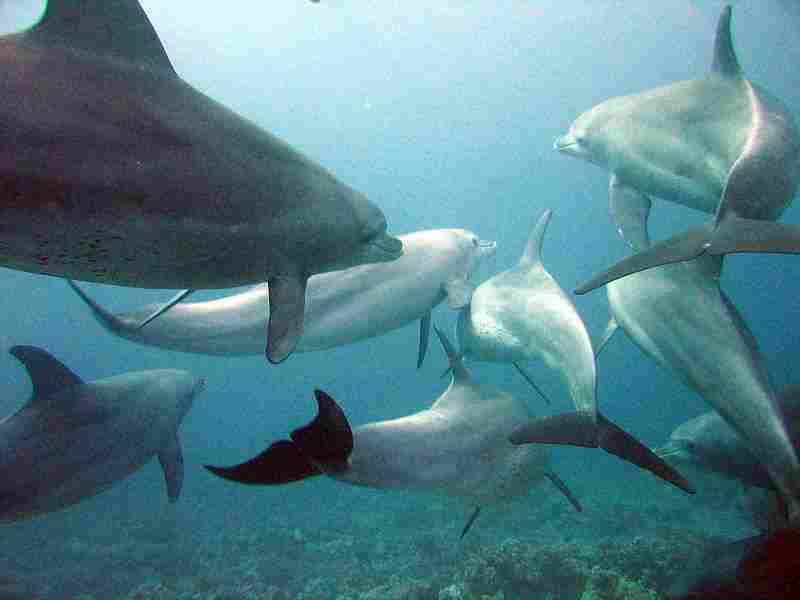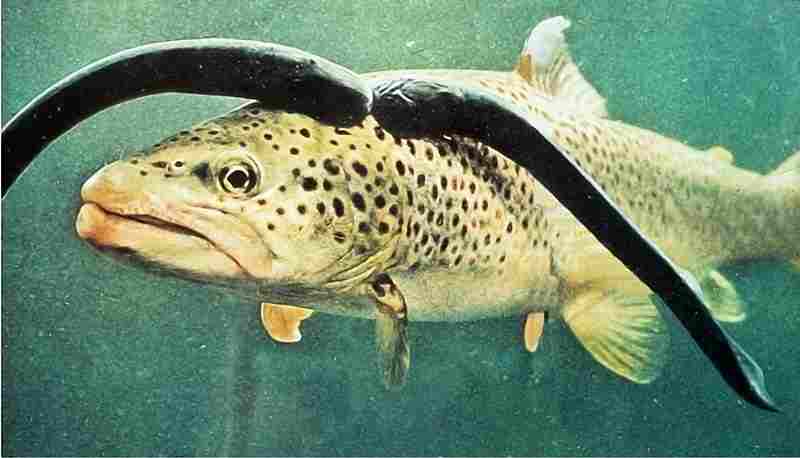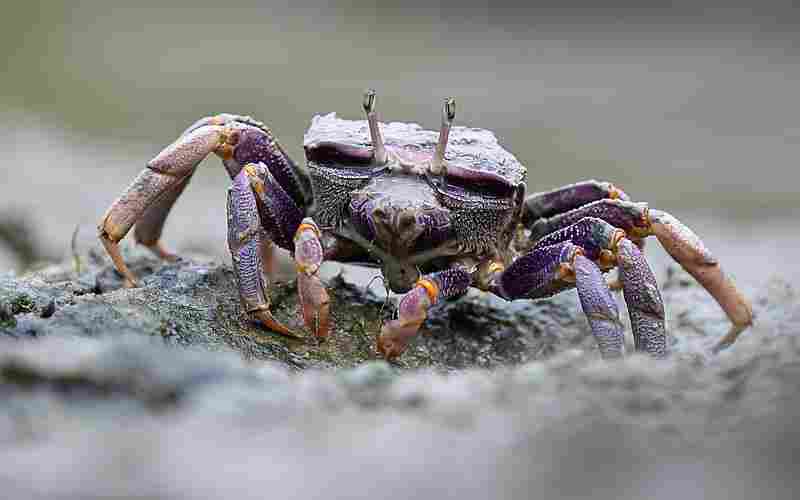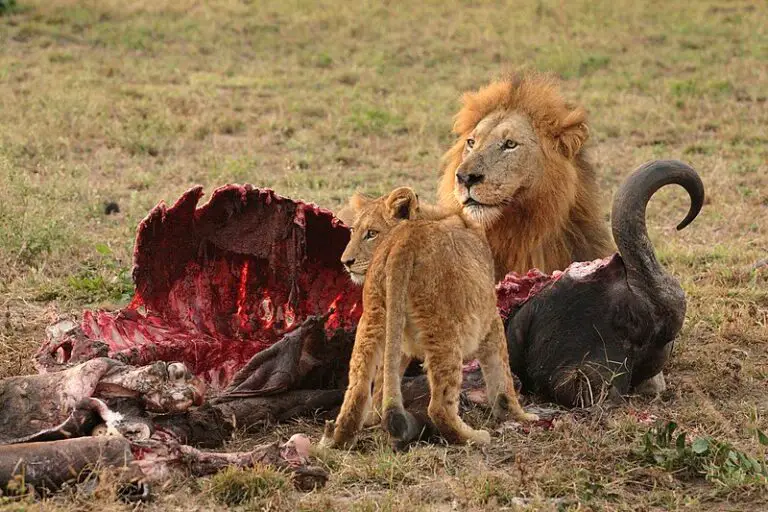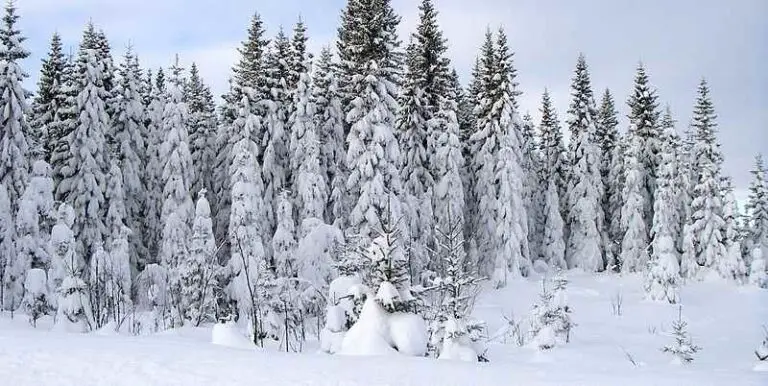11 Biotic Factors in a Pond Ecosystem and Their Functions
Biotic factors in a pond are; producers; herbivores, carnivores, omnivores, decomposers, mutualism, commensalism, parasitism, competition, predation, and adaptation.
This article discusses the biotic factors in a pond and their functions, as follows;
1). Producers (as one of the Biotic Factors in a Pond Ecosystem)
Producers, as biotic components of pond ecosystems, have a vital role in the sustenance of life and maintenance of ecological balance.
These organisms, which include various species of rooted, submerged, emergent, and floating (vascular and non vascular) plants, as well as algae, function as the foundation of the food chain, and contribute to the health and sustainability of pond ecosystems. This section discusses the functions and significance of producers in a pond ecosystem.
Functions of Producers in a Pond Ecosystem
Functions of producers in a pond ecosystem include; primary production, oxygen cycling, habitat and shelter provision, food provision, nutrient cycling, and water quality control.
Producers are autotrophic organisms that can carry out photosynthesis. They utilize solar radiation (in the form of light), nutrients and carbon dioxide which they access from the water column, to produce organic compounds (biomass), primarily in the form of carbohydrates.
This process is known as primary production, and is essential for the continuity of energy transfer in the pond ecosystem.
The production of oxygen can also be attributed to pond producers, which release oxygen into the water column when they photosynthesize. This mechanism of oxygenation is important for the survival of all aquatic organisms, including invertebrates and fish. Producers help to maintain healthy levels of oxygen in the water.
Many pond plants, including submerged and emergent hydrophytes, provide shelter and microhabitat for various aquatic organisms, using their meadow structures [10]. Amphibians, fish, and several invertebrates utilize these plants for concealment from predators, and as viable breeding grounds.
Herbivorous organisms in aquatic habitats use producers as a direct food source. These include some crustacean-zooplankton, mollusks, and fish species that feed on algae and aquatic (vascular and non-vascular) plants. These herbivores, in turn, serve as prey for predatory organisms higher trophic levels.
Aquatic producers absorb and assimilate various nutrients from the water column, including essential elements like phosphorus and nitrogen. They therefore play an effective role in the recycling of nutrients, by incorporating these elemental resources into their tissues.
When the producers die and decompose, these incorporated nutrients are released back into the water through biodegradation, facilitating continued growth in the ecosystem.
Water quality is improved by pond plants, through the removal of excess nutrients and stabilization of water chemistry. Their structures and organelle function as a natural filtration system, helping to reduce nutrient-and-particulate water pollution, and minimizing algal blooms.
Types of Producers in a Pond
Producers in a pond ecosystem include; phytoplankton, and plants like duckweed, hyacinth, water lilies, and cattails.

Algae are a diverse group of photosynthetic organisms which include unicellular individuals that can form multicellular groups [5]. These groups often represent the dominant producers inhabiting pond ecosystems, and the algae may include variants like filamentous, green, and blue-green algae, which are mostly microscopic and free-floating organisms that drift with the currents. They serve as an essential food source for many aquatic organisms.
Rooted, emergent and submerged plants are common in ponds, where provide microhabitat, shelter, and food for various aquatic heterotrophs.
Macrophytes generally refer to larger aquatic plants that are often rooted in the bottom substrate of the pond. They are fully involved in oxygen production and nutrient cycling.
2). Herbivores in a Pond Ecosystem
Herbivores, as biotic components of pond ecosystems, also contribute to maintaining the ecological equilibrium of their habitat. These organisms are classified a primary consumers, and mainly feed on autotrophic producers such as algae and vascular hydrophytes, thereby contributing to the intricate food web dynamics that occur within ponds.
Functions of Herbivores in a Pond Ecosystem
Functions of herbivores in a pond ecosystem include; autotroph population control.
Aquatic herbivores are helpful in regulating the abundance and total biomass of algae and hydrophytes in ponds.
They graze on these primary producers, thereby preventing overgrowth, and maintaining water de-congestion/clarity. In the absence of such herbivores, unchecked algal growth can lead to water quality issues, including oxygen depletion.
Nutrient cycling in ponds is indirectly influenced by herbivores. By consuming autotrophic biomass, these organisms incorporate essential nutrients such as nitrogen, phosphorus and potassium, into their tissues. When herbivores either die or are preyed upon, these nutrients are released back into the water column, enriching it and supporting further primary production.
Herbivores can be said to occupy an 'intermediate' trophic level in the pond food web. From this position, they convert the stored energy in algae and aquatic plants, into biomass, making this energy available to higher trophic levels. Predators, including carnivorous arthropods and fish, rely on lower organisms like herbivores as a food source.
The species richness and diversity of pond ecosystems are supported by herbivores. Their feeding behaviors and preferences, influence the composition of plant and algal communities. This, in turn, affects the types of animals that can thrive in the pond, fostering biodiversity.
Examples/Types of Herbivores in a Pond
Herbivores in a pond ecosystem include; mollusks, tadpoles, small fish, zooplankton, and insect larvae like the aquatic caterpillar (Lepidoptera: Pyralidae).
Aquatic mollusks like snails are fairly common herbivores in ponds. They graze on submerged vegetation and algal biomass. The feeding activities of these organisms help to control algae growth.
The larval stages of some insects are herbivorous, feeding on aquatic plants and phytoplankton. Some adult aquatic insects may also consume plant matter.
Aquatic larvae of frogs and toads; tadpoles, are herbivores which graze on algae and plants in their aquatic habitat [13].
Some species of fish, such as tilapia zilli and grass carp, are herbivorous in their feeding habits. It must be noted that these fish also have omnivorous tendencies.
Microscopic (and some macroscopic) herbivorous animals, generally referred to as zooplankton, including copepods and water fleas, play an important role in controlling algal blooms within the pond environment.
3). Carnivores (as one of the Biotic Factors in a Pond Ecosystem)
Carnivores are an important group of organisms in pond ecosystems, and represent a significant biotic component.
They occupy an equally vital position in the food web, and contribute to the establishment and maintenance of ecological dynamics of aquatic environments.
Functions of Carnivores in a Pond Ecosystem
The functions of carnivores in a pond ecosystem include; herbivore population regulation, energy transfer-facilitation, biodiversity promotion, nutrient cycling, and predator-prey interactions.
As high-level consumers, carnivores in pond ecosystems are pivotal in their role toward controlling local herbivore populations.
These organisms help to maintain a balance between the population sizes of herbivore and primary producer (algae, aquatic plants) communities; by preying on herbivorous species within their environment.
Also by reason of their relatively-high trophic position in the food web, herbivores serve as a bridge for energy transfer.
They obtain chemical bioenergy by consuming biomass from prey organisms, which, in turn, have acquired their energy from lower sources like primary producers. This dynamic of energy transfer is essential for the sustainability of the entire ecosystem.
Like herbivores, carnivores are contributors to the diversity of species in pond ecosystems. Through the exertion of top-down control on lower organisms, they prevent any single species from becoming numerically dominant. This, in turn, fosters the growth of a diverse community of species that each possess specific and helpful adaptations.
Carnivores are influential to nutrient cycling by regulating the populations of herbivores. With fewer herbivores consuming plants and algae, overgrazing risks are reduced and more nutrients are able to remain in the ecosystem. The nutrients conserved as a result, are utilized for essential sustaining processes.
Lastly, predator-prey dynamics in ponds rely on carnivores as a central element. Their predatory activities drive the adaptations and behavioral tendencies of herbivores and other potential-prey species. This dynamic interplay, has an effective role toward the resilience and stability of the ecosystem.
Examples/Types of Carnivores in a Pond
Examples/types of carnivores in a pond ecosystem include; insects, crustaceans, amphibians, fish, and some water birds.
Several aquatic insects, including dragonfly nymphs and some water beetles (there are also herbivorous and detritivorous water beetles, especially in adult stage, while the larval stage is often carnivorous [15]), are carnivorous and prey on smaller aquatic organisms, including tadpoles, zooplankton, and herbivorous insects.
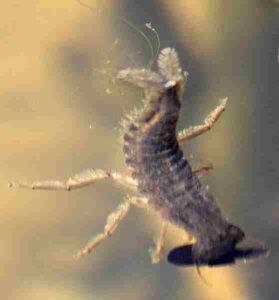
Crustaceans such as some shrimps and crayfish, are opportunistic carnivores, which may capture smaller organisms as part of their diet. Their versatility in terms of food selection however implies that these animals are better classified as omnivores and detritivores.
Adult amphibians like toads and frogs are carnivorous, consuming a variety of prey organisms like insects, worms, small fish, and even other amphibians. A good example of animals in this category is the wetland-preferring bullfrog, whose diet ranges from annelids, fish, amphibians, reptiles, insects, myriapods, arachnids, and crustaceans, to small mammals [8].
Predatory fish, including bass, catfish and pike, are common in pond ecosystems. They prey on smaller fish, aquatic invertebrates, reptiles, tadpoles, and adult amphibians among others.
Water birds like kingfishers and herons, often function as apex predators in pond ecosystems. They feed on a wide range of invertebrates, fish, and amphibians.
4). Omnivores in a Pond Ecosystem
Omnivores are significant in their natural role as biotic components within pond habitats.
These versatile organisms occupy a unique niche of their own, being opportunistic feeders that are capable of combining and switching between plant and animal food sources.
Functions of Omnivores in a Pond Ecosystem
The functions of omnivores in a pond ecosystem include; nutrient recycling, algal bloom control, regulation of herbivore populations, energy transfer, and diversity promotion.
Omnivores are important to the process of nutrient recycling within pond ecosystems.
They are known to consume a wide range of organic material, including algae, hydrophytic biomass, animal matter, and detritus. As a result, the omnivores release nutrients back into the ecosystem through their waste, so that these nutrients become available for other organisms.
Excessive growth of algae; which are primary producers in ponds, can lead to algal blooms that can be detrimental to the entire ecosystem [3]. Omnivores, such as certain species of turtles, crustaceans and fish, help to regulate algal populations by grazing on them.
Pond omnivores contribute to maintaining ecological balance by consuming both plants and smaller aquatic organisms (prey). They can control the populations of herbivorous species including some aquatic insects, and tadpoles.
Through their versatility, omnivores serve as an important link in energy transfer within the pond food web. They are able to acquire energy from both plant and animal sources, which makes them an essential part of the process/mechanism of energy flow from primary producers to consumers in higher trophic levels.
Diversity is supported and promoted by omnivores within pond ecosystems. Their varied diet enables these organisms adapt to changing conditions of food availability, which fosters a diverse biological community.
Examples of Omnivores in the Pond Ecosystem
Examples of omnivores in the pond ecosystem are; mud turtles, crayfish and ducks, as well as certain species of fish and amphibians.
Mud turtles are omnivores that can consume algae, small fish, and gastropods [12]. They are therefore instrumental in controlling algal growth, and contributing to nutrient cycling.

Some crustaceans like crayfish are versatile and adaptable, exhibiting omnivorous behavior, by scavenging on animal detritus and consuming plant matter. This also implies that they are detritivorous and can be classified among decomposers in the ecosystem (within a broad context of assessment).
Fish that can be omnivorous in ponds include; angelfish, Arowanas, as well as tilapia and carp (which are preferentially herbivorous in their diet). These fish are known to feed on aquatic plants/algae, small invertebrates, and other fish.
While tadpoles are herbivores, adult amphibians like frogs are highly opportunistic and can be considered omnivores, because they often consume a variety of organic materials that include soft, digestible plant matter, insects, and smaller aquatic species.
5). Decomposers (as one of the Biotic Factors in a Pond Ecosystem)
Decomposers represent another example of biotic components that occur in pond ecosystems.
They are remarkable organisms which are responsible for the breakdown of plant and animal material, thereby returning essential nutrients to the water column and bottom sediments, and promoting overall balance in the ecosystem.
Functions of Decomposers in a Pond Ecosystem
The functions of bacteria in a pond ecosystem include; nutrient cycling, detoxification, energy transfer and waste removal.
Decomposers like bacteria and fungi, are natural recyclers of organic resources. These microbes break down organic matter, such as shed leaves, dead aquatic plants, and animal remains, into simpler substances. This process of decomposition releases nutrients like carbon, phosphorus and nitrogen, back into the sediments and water, thereby making them available for other pond organisms, including autotrophs at the bottom of the food chain/energy pyramid.
Detoxification of the pond ecosystem is also carried out by decomposers. They cause the degradation of organic compounds that are potential toxins and pollutants, and render them less harmful by converting them into less toxic products [2]. This detoxification process is often employed by humans in bioremediation projects, and helps to maintain water quality.
By degrading organic material, decomposers also release energy stored within the biomass. This energy them becomes available for other organisms, from autotrophs to scavengers and predators, and further contributes to the pond's energy flow sustenance.
Lastly, decomposers play a key role in the removal of waste materials. They prevent the accumulation of organic remains, which, if left unchecked, could lead to pathogen growth, oxygen depletion, temperature/pH alteration, and water quality problems in the pond.
Examples of Decomposers in the Pond Ecosystem
Examples of decomposers in the pond ecosystem are; fungi, bacteria, aquatic worms, gastropods, bivalves, some insect larvae, adult insects, crustaceans, opportunistic fish, and amphibian larvae.
Invertebrate species like tubificid worms are detritivorous decomposers that burrow into sediments and help break down organic material in the pond sediments [1].
Gastropods including snails like the ramshorn snail, are known for their role in consuming detritus and partially-decomposed plant matter.
Also, bivalves like freshwater mussels and clams are filter feeders, which play a role of water purification while feeding on detrital organic matter and bacteria.
Aquatic insect larvae, like those of mosquitoes and midges, contribute to decomposition in ponds by feeding on organic debris. Adult aquatic insects like dragonflies and damselflies, though they may not be detritivorous, play a role in nutrient recycling when their larvae serve as decomposers.
Some small crustaceans, such as amphipods and copepods, are opportunistic feeders that consume detritus and assist in breaking down organic matter.
Certain species of fish can feed on detritus and contribute to the decomposition process when other food materials are scarce.
The tadpole form of amphibians like frogs is also known to consume detrital organic matter, thereby contributing to nutrient recycling.
6). Mutualism in a Pond Ecosystem
Mutualism is a type of symbiotic relationship that thrives within the complex web of interactions in a pond ecosystem.
It can be described as a cooperative partnership between different species that offers benefits to both parties, promotes ecological stability and enhances the overall health of the ecosystem.
Functions of Mutualism in a Pond Ecosystem
Functions of mutualism in a pond ecosystem are; nutrient cycling, disease control, life sustenance; pollination, and organic protection.
Nutrient exchange is an important aspect and outcome of mutualistic interactions. In a pond, different species may live cooperatively to access, utilize and recycle essential nutrients.
For example, nitrogen-fixing cyanobacteria can form mutualistic associations with certain aquatic plants, in which they provide the plants with nitrogen while receiving sugars like glucose in return [6].
Diseases can be controlled through mutualistic relationships within the pond ecosystem. One means by which this occurs is through increased resistance and resilience that accompany cooperative living. In some cases, organisms cooperate to remove pathogens and/or parasites from each other's bodies, thereby reducing the prevalence of disease.
Mutualism can manifest as cleaning symbioses, especially in saltwater ponds. Cleaner organisms, such as cleaner shrimp or fish, remove detritus and parasites from the bodies of larger organisms, to the benefit of both parties. The larger organism gets cleaned in the process, while the cleaner organism gains a meal.

While it is much more common in terrestrial ecosystems, pollination by aquatic insects can occur also in pond ecosystems. These interactions are generally mutualistic, as they are to the benefit of both the pollinator and the plant: where the plant gets pollinated, and the insect obtains food resources in the form of nectar or other flower-derived materials.
Lastly, mutualistic partners may provide refuge and protection from predators. For example, certain small fish species seek refuge among aquatic plants, which benefit from the presence and activities of these fish, as they feed on algae and potentially deter herbivorous invertebrates.
Example of Mutualism in a Pond
Examples of mutualism in a pond are;
1. Cyanobacteria nitrogen-fixation with aquatic plants
2. Refuge-seeking by fish in hydrophyte structures/meadows
3. Cleaner shrimp and fish in saltwater environment
A particularly dramatic example of mutualism in a pond ecosystem is the cleaning symbiosis between cleaner organisms and various fish species in saltwater marine and estuarine ponds. Cleaner fish, such as cleaner gobies or cleaner wrasses, have developed behavioral adaptations where they attach to larger fish from which they remove (and consume) parasites and dead skin. In return for their cleaning service, the cleaner organisms gain access to food and protection.
This mutually beneficial form of interaction, helps maintain the health of both cleaner and client fish populations within the pond ecosystem.
7). Commensalism (as one of the Biotic Factors in a Pond Ecosystem)
Commensalism can be described as a fascinating ecological interaction observed in pond ecosystems, where one species benefits, and the other remains generally unaffected. Unlike mutualism, where both species benefit, or parasitism, where one benefits to the detriment of the other, commensalism represents a rather one-sided relationship.
Functions of Commensalism in a Pond Ecosystem
Functions of commensalism in pond ecosystems include; shelter and habitat provision, enhanced foraging, transport and dispersal, as well as predator avoidance.
It is typical in many commensal relationships, for one species to find shelter or habitat on or near another species, without causing any harm. This scenario is especially common in pond ecosystems, where various species live in close proximity.
Enhanced foraging is another potential benefit for commensal species in ponds. For instance, birds that perch on (or stay close to) larger water-dwelling animals, like alligators or hippos, can catch insects that are disturbed and exposed by the movement of these larger creatures.
Commensalism can aid in the dispersal of species across a pond ecosystem. For example, propagules of seeds of aquatic plants may become attached to waterfowl [14], thereby allowing them to transport these reproductive materials (and the associated plant species) to new locations.
Some pond species may seek refuge near or on other organisms to avoid predators. By cohabitating with a larger, more intimidating and defensive species, they gain protection.
Example of Commensalism in a Pond
Examples of commensalism in ponds include arthropod-algae and insectivore-carnivore associations.
One classic example of commensalism in a pond is the relationship between certain aquatic organisms; such as mayfly larvae, and algae. Mayfly larvae are aquatic insects which require stable substrates to attach themselves to during their developmental phase. Algae, which often coat submerged rocks and other underwater surfaces, serve as suitable substrates for these larvae.
It must be noted that algae is also a major food source for mayfly larvae [4], although within the attachment context; the algae are not affected, making it a commensal association.
The mayfly larvae benefit in this interaction, because they have a stable surface to attach to, which protects them from being swept away by the impact of water currents. The algae, on the other hand, are neither harmed nor significantly benefited by the presence or activities of the mayfly larvae. They continue to carry out their photosynthetic processes and grow without any notable alteration.
The key characteristic of commensal interaction is that it's somewhat one-sided; as in this case where the mayfly larvae benefit from the algae's presence, but the algae remain largely indifferent to the larvae. This represents a quintessential example of commensalism in pond ecosystems.
8). Parasitism in a Pond Ecosystem
Parasitism is a fascinating, and often harsh, ecological relationship that can be observed in pond ecosystems. This section discusses parasitism, its functions as a biotic component of the ecosystem, and its example(s), all in relation to ponds.
Functions of Parasitism in a Pond Ecosystem
Functions of parasitism in a pond ecosystem include; population control, nutrient cycling, and selective pressure exertion.
The regulation of organic populations within a pond ecosystem, is a crucial function that can be attributed to parasites. By infecting, and sometimes causing the death of, their host organisms, they prevent the unchecked growth and overpopulation of these organisms (in some cases, parasitism leads to severe population decline [16]). This, in turn, helps to maintain ecological equilibrium in the pond.
Through their activities, parasites contribute to nutrient cycling in the ecosystem.
When they infest, infect, and ultimately kill their host, the nutrients from the body parts of the host are released (through decomposition) into the environment, thereby becoming available for utilization by other organisms to utilize. This is a particularly important process in nutrient-limited pond ecosystems.
As implied in the discussion so far, parasites exert selective pressure on host populations. Over time, this can lead to the evolution of host organisms that are highly-adapted and more resistant to parasitic infections; which in turn fosters counter-adaptation in the parasite species. This evolutionary arms race is capable of having significant impacts on the genetic diversity, versatility and adaptability of the host population.
Examples of Parasitism in a Pond
Examples of parasitism in a pond are; fish lice (microbial crustacean) infestation, Giardia (protozoan) infection, as well as endoparasitic fish nematodes and trematodes.
Pond ecosystems commonly feature parasitic organisms like fish lice and flukes that may infest inhabitants. These organisms usually attach themselves to fish, feeding on their tissues and body fluids, which can cause harm to the fish.
Fish lice (Argulus spp; family Argulidae) can be described as branchiuran crustaceans that parasitize both freshwater and marine fish. Heavy infestations by Argulus spp. can pose a huge threat to fish health and survival, sometimes leading to largescale morbidity and mortality [11]. Asides their direct effects, fish lice are also known to serve as disease vectors for other kinds of infection in aquatic organisms.
Protozoan parasites such as Giardia can occur in pond water. While these organisms may not cause direct harm to fish, they can pose risks to other animals that ingest contaminated food or water. In humans, Giardia infections can cause gastrointestinal, diarrheal illnesses.
Endoparasites residing in the digestive tract and gills of pond fish, can also be harmful, as most of the absorb nutrients from the host, and lead to malnutrition as well as mortality
Examples of endoparasites in pond fish are; anasakid roundworms (Pseudoterranova decipiens, Anisakis simplex), a nematode also known as the herring worm, and didymozoid trematodes.
How Parasites Get into a Pond
Parasites get into a pond through infested invasive organisms, and contaminated water influx, among a few other related pathways.
Waterbirds and other mobile animals (like racoons) which have access to infected ponds, rivers or streams, can carry parasite eggs and/or larval cysts, on their bodies. When these infested animals visit a healthy pond, they can act as vectors by introducing the parasites into the new water body.
Ground and surface water can become infected with parasites from different sources, including municipal wastewater discharge, agricultural runoff, or exposed animal waste. If this contaminated water enters a pond through mechanisms like stormwater influx, it can introduce parasites into the ecosystem.
9). Competition (as one of the Biotic Factors in a Pond Ecosystem)
Competition is a fundamental ecological dynamic, that influences the conditions of pond ecosystems.
Functions of Competition in a Pond Ecosystem
Functions of competition in a pond ecosystem include; resource allocation, population regulation, and species differentiation.
Allocation of resources is a central aspect of competition in a pond ecosystem. Resources like food, breeding sites and shelter, are often limited, so that species are forced to compete for access to these resources. This dynamic of competition, can help in the efficient utilization of available resources.
Competition also regulates the population sizes of species that inhabit the pond ecosystem. When multiple species struggle for the same resources, it prevents any one of such species from growing explosively in numbers, and dominating the ecosystem. This numerical balance is critical for the long-term wellness and stability of the pond.
Over time, competition can result in niche specialization and species differentiation [7]. Different species can evolve and adapt to utilize slightly different resources, or occupy distinct ecological niches, thereby reducing the intensity and consequences of direct competition.
Examples of Competition in a Pond
Examples of competition in a pond are; frog and toad prey-competition, minnow and arthropods, large minnows and bass/catfish, and crustacean space/refuge-competition. Both intraspecific and interspecific competition can occur in ponds and other aquatic (freshwater, marine, brackish) habitats.
The struggle between frogs and toads for prey like water flies, is a good example of competition in a pond ecosystem. This competition occurs because both frogs and toads rely on the same food source(s).
Other potential competitors in pond ecosystems are minnows and aquatic insects, which often compete for food resources like algae. In a closely related context, larger minnows may compete with small bass and catfish, for prey such as crayfish and shrimp, thereby highlighting the multifaceted nature of pond competition.
Crustaceans crabs, can enter ponds through crab holes and other crevices in which they shelter. These organisms not only compete for food and space resources but can also have predatory interactions with other inhabitants of the pond.
Some species in pond ecosystems may be poor competitors, making ecological differentiation their best chance of survival. For example, species like the natterjack toad (Bufo calamita) and common parsley frog (Pelodytes punctatus) found in temporary ponds may be considered less-competitive compared to other amphibian species/communities.
10). Predation in a Pond Ecosystem
Predation acts as a biotic component of pond ecosystems, that plays a key role in maintaining balance and regulating species populations.
The functions of predation in a pond ecosystem are discussed here with examples.
Functions of Predation in a Pond Ecosystem
Functions of predation in a pond ecosystem are; population control, species diversity, energy transfer, and natural selection.
Like other exclusive ecological interactions, predation can help regulate the populations of various (prey) species within the pond ecosystem. Most predators selectively prey on individuals of certain species, thereby preventing overpopulation that could cause resource depletion and ecosystem imbalance.
Species diversity is often increased through predation, through the prevention of excessive numerical dominance of any one species in the pond. This diversity is important for a functional ecosystem, as it increases the variety of ecosystem services and adaptive contributions, which in turn boosts resilience to environmental changes.
Predation is one of multiple processes that facilitate the continuous transfer of energy through the food web. Prey species are consumed by predators, so that their energy is transferred up the trophic levels, ultimately supporting the entire structure of the ecosystem.
Like parasitism, predation exerts selective pressure on affected (prey) species, and favors individuals with adaptations that enhance their chances of survival. Over time, this effect can lead to the evolution of diverse anti-predator defenses in prey species.
Examples of Predation in a Pond
Examples of predation in a pond are;
1. Small fish consumption by catfish and pike
2. Insect and worm consumption by frogs
3. Fish consumption by heron
4. Invasive hunting and consumption of pond fish by racoons
The great blue heron is a well-known avian predator in pond ecosystems. These birds possess relatively-impressive size and sharp bills, which are adaptations enabling them to prey on fish like goldfish and koi. They are stealthy hunters, and often appear motionless in the water until they strike.

Raccoons are opportunistic predators of pond fish, which they are known to capture and consume. These omnivores are widely adaptable and distributed, so that they can pose a significant threat to both natural and artificial populations of pond fish.
Protecting Ponds from Predators
Protecting ponds from predators can be done by the use of nets, artificial hiding spots, light and sound installation, and natural barriers.
Installing nets over ponds (both natural and artificial) can be an effective way to deter invasive predators like herons and raccoons. These nets prevent the predatory organisms from gaining access to the water, and protects pond inhabitants.
Incorporating aquatic plants and various underwater structures in a pond can provide hiding spots for fish, thereby making it more challenging for predators to capture them. This approach is best suited for large ponds and may be too complex to be applied within the context of sustainable agriculture (aquaculture).
Some pond owners utilize motion-activated lights as well as sound devices, to startle and deter predators when they approach the pond.
Lastly, natural barriers like shrubs fences that are positioned closely around the edges of ponds can discourage land-based predators from entry.
11). Adaptation (as one of the Biotic Factors in a Pond Ecosystem)
Adaptation is a critical aspect of life in a pond ecosystem, where the challenges of underwater living necessitate the development of specialized physiological features and behaviors in organisms.
The functions of adaptation in a pond ecosystem as well as some common adaptations observed in pond animals and plants, are highlighted in this section.
Functions of Adaptation in a Pond Ecosystem
Adaptation in a pond ecosystem is important because it contributes to organic survival through energy acquisition, respiration, protection, and habitat utilization.
Specialized adaptations in pond organisms enable them to survive in their aquatic environment. These include features that are used for breathing, movement, and obtainment of food underwater.
Adaptations often focus on the optimization of energy acquisition mechanisms and pathways. Efficient photosynthesis in aquatic plants, and effective hunting strategies in predators are examples of such adaptations.
Due to the predominance of water as an ambient medium in ponds, many pond organisms have developed adaptations for breathing underwater. Gills, which are specialized structures for extracting dissolved oxygen from water, are particularly common in aquatic animals with the exception of some like adult amphibians that utilize other mechanisms for underwater respiration.
Adaptations may also serve as protective structures/mechanisms. Some pond animals, like mollusks, possess hard shells to serve as a mechanical shield against predators [9].
Optimal habitat utilization is another positive outcome of adaptive evolution in pond organisms, as these organisms are usually able to make the most of their environment by reason of their adaptations. For example, plants in ponds may possess emergent leaves that capture sunlight above the water surface.
Adaptations in Pond Animals
Adaptations in pond animals include possession of gills, streamlined body, mucous layer, and scales. Others like high sensitivity, specialized dentition, and distinctive patterns of locomotion are also present in pond organisms to support their feeding habits/preferences.
Many pond animals, including fish and aquatic insects, possess gills that they use to extract oxygen from water. In aquatic insects, gills occur as outgrowths from the tracheal structures [17], and perform a generally identical function to animal gills.
Fish, amphibians, aquatic reptiles and insects usually possess a streamlined body morphology to reduce water resistance while swimming, which aids in efficient navigation and hunting.
Mucous layer and scales are also not uncommon in pond fish, which possess such features on their bodies, to make them waterproof, provide some form of protection, and reduce water resistance.
Adaptations in Pond Plants
Adaptations in pond plants include; emergent leaves, aerenchyma tissues, and specialized floating leaves.
Emergent leaves occur in some pond plants, enabling them to rest on the surface of the water. This adaptation maximizes sunlight exposure for photosynthesis.
Floatation is a common adaptation in aquatic plants, and is based on the presence of air-filled spaces in their tissues. Aerenchyma tissues help plants to remain buoyant, and facilitates the exchange of gases underwater.
Adaptations for Pond Animals to Breathe Underwater
Pond organisms often possess specialized structures to breathe underwater.
For instance, mayfly nymphs have gills on their abdomen, which enable them to continuously extract dissolved oxygen from water. This adaptation eliminates the need for these nymphs to come to the surface for air.
Conclusion
Biotic factors in a pond include;
1. Producers
2. Herbivores
3. Carnivores
4. Omnivores
5. Decomposers
6. Mutualism
7. Commensalism
8. Parasitism
9. Competition
10. Predation
11. Adaptation
References
1). Anschutz, P.; Lécroart, P.; Gerino, M.; Alain, B. (2012). "Effects of Tubificid Worm Bioturbation on Freshwater Sediment Biogeochemistry." Aquatic Geochemistry 18(6). Available at: https://doi.org/10.1007/s10498-012-9171-6. (Accessed 10 September 2023).
2). Bala, S.; Garg, D.; Thirumalesh, B. V.; Sharma, M.; Sridhar, K., Inbaraj, B. S.; Tripathi, M. (2022). "Recent Strategies for Bioremediation of Emerging Pollutants: A Review for a Green and Sustainable Environment." Toxics. 2022 Aug 19;10(8):484. Available at: https://doi.org/10.3390/toxics10080484. (Accessed 10 September 2023).
3). Burtle, G. (2013). "Managing Algal Blooms and the Potential for Algal Toxins in Pond Water " Available at: https://www.researchgate.net/publication/259214631_Managing_Algal_Blooms_and_the_Potential_for_Algal_Toxins_in_Pond_Water. (Accessed 10 September 2023).
4). Chuang, Y.-L.; Yu, S.-F.; Lin, H.-J. (2014). "Dietary variation and food selection by mayfly grazers in a subtropical mountain stream." Zoological Studies 53(1):54. Available at: https://doi.org/10.1186/PREACCEPT-1290060451265184. (Accessed 10 September 2023).
5). Cornwallis, C. K.; Svensson-Coelho, M.; Lindh, M.; Li, Q.; Stábile, F.; Hansson, L.-A.; Rengefors, K. (2023). "Single-cell adaptations shape evolutionary transitions to multicellularity in green algae." Nature Ecology & Evolution 7(6):1-14. Available at: https://doi.org/10.1038/s41559-023-02044-6. (Accessed 10 September 2023).
6). Ekman, M.; Picossi, S.; Campbell, E. L.; Meeks, J. C.; Flores, E. (2013). "A Nostoc punctiforme sugar transporter necessary to establish a Cyanobacterium-plant symbiosis." Plant Physiol. 2013 Apr;161(4):1984-92. Available at: https://doi.org/10.1104/pp.112.213116. (Accessed 10 September 2023).
7). Gao, V.; Morley-Fletcher, S.; Maccari, S.; Vitaterna, M. H.; Turek, F. W. (2020). "Resource competition shapes biological rhythms and promotes temporal niche differentiation in a community simulation." Wiley, Ecology and Evolution 10(20):11322-11334. Available at: https://doi.org/10.1002/ece3.6770. (Accessed 10 September 2023).
8). Gibson, J.; Hoffman, R. (2019). "Prey of American Bullfrogs (Rana catesbeiana) from Henry and Patrick Counties, Virginia (Anura: Ranidae)." Available at: https://www.researchgate.net/publication/343212237_Prey_of_American_Bullfrogs_Rana_catesbeiana_from_Henry_and_Patrick_Counties_Virginia_Anura_Ranidae. (Accessed 10 September 2023).
9). Nagasawa, H. (2013). "Mollusk shell structures and their formation mechanism1." Canadian Journal of Zoology 91(6). Available at: https://doi.org/10.1139/cjz-2012-0333. (Accessed 10 September 2023).
10). Panzeca, P.; Troia, A.; Madonia, P. (2021). "Aquatic Macrophytes Occurrence in Mediterranean Farm Ponds: Preliminary Investigations in North-Western Sicily (Italy)." Plants (Basel). 2021 Jun 25;10(7):1292. Available at: https://doi.org/10.3390/plants10071292. (Accessed 10 September 2023).
11). Pekmezci, G. Z.; Yardimci, B.; Bolukbas, C. S.; Beyhan, Y. E.; Umur, S. (2011). "Mortality Due to Heavy Infestation of Argulus Foliaceus (Linnaeus, 1758) (Branchiura) in Pond-Reared Carp, Cyprinus Carpio L., 1758 (Pisces)." Crustaceana 84(5-6):553-557. Available at: https://doi.org/10.1163/001121611X574317. (Accessed 10 September 2023).
12). Platt, S. G.; Berezin, A. R.; Miller, D. J.; Rainwater, T. (2016). "A dietary study of the rough-footed mud turtle (Kinosternon hirtipes) in Texas, USA." Available at: https://library.wcs.org/doi/ctl/view/mid/33065/pubid/PUB19277.aspx. (Accessed 10 September 2023).
13). Rossa-Feres, D.; Jim, J.; Fonseca, M. (2004). "Diets of tadpoles from a temporary pond in southeastern Brazil (Amphibia, Anura)." Revista Brasileira de Zoologia 21(4). Available at: https://doi.org/10.1590/S0101-81752004000400003. (Accessed 10 September 2023).
14). Soons, M.; Brochet, A.-L.; Kleyheeg, E.; Green, A. J. (2015). "Seed dispersal by dabbling ducks: an overlooked dispersal pathway for a broad spectrum of plant species." Journal of Ecology 104(2):n/a-n/a. Available at: https://doi.org/10.1111/1365-2745.12531. (Accessed 10 September 2023).
15). Stein, K.; Mitchell, J. C.; Smith, E.; Waldon, J. L. (2003). "Trophic Level Distribution of Ephemeral Pool Insects: Uniformity among Pools." Journal of Freshwater Ecology 18(4):549-556. Available at: https://doi.org/10.1080/02705060.2003.9663995. (Accessed 10 September 2023).
16). Stringer, A. P.; Linklater, W. L. (2014). "Everything in Moderation: Principles of Parasite Control for Wildlife Conservation." BioScience 64(10):932-937. Available at: https://doi.org/10.1093/biosci/biu135. (Accessed 10 September 2023).
17). Verberk, W. C.; Bilton, D. T. (2013). "Respiratory control in aquatic insects dictates their vulnerability to global warming." Biol Lett. 2013 Aug 7;9(5):20130473. Available at: https://doi.org/10.1098/rsbl.2013.0473. (Accessed 10 September 2023).
